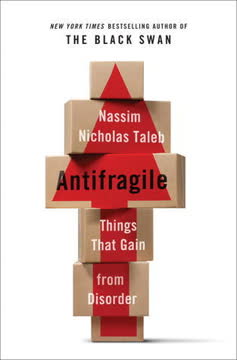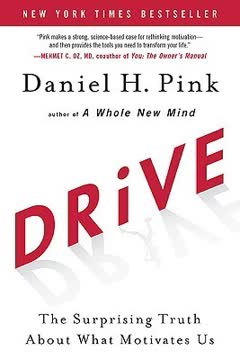Key Takeaways
1. Open organizations ignite passion and performance
"An 'open organization'—which I define as an organization that engages participative communities both inside and out—responds to opportunities more quickly, has access to resources and talent outside the organization, and inspires, motivates, and empowers people at all levels to act with accountability."
Unleashing collective potential. Open organizations tap into the passion and creativity of their workforce by breaking down traditional hierarchies and fostering a culture of collaboration. This approach enables faster response to market changes, broader access to talent and resources, and higher levels of employee engagement and motivation.
Key characteristics:
- Transparent communication channels
- Participative decision-making processes
- Meritocratic recognition of contributions
- Emphasis on purpose and shared values
- Continuous learning and adaptation
By embracing openness, companies can create a more agile, innovative, and resilient organization capable of thriving in today's rapidly changing business environment.
2. Purpose drives engagement and innovation
"Purpose is often misunderstood. It's not what a group does but why it does what it does. It's not a goal but a reason—the reason it exists, the need it fulfills, and the assistance it bestows."
Aligning passion with purpose. A compelling organizational purpose that goes beyond profit-making is crucial for inspiring and motivating employees. When people believe in the mission of their company, they are more likely to invest their creativity, energy, and discretionary effort into their work.
Benefits of purpose-driven organizations:
- Higher employee engagement and retention
- Increased innovation and problem-solving
- Stronger customer loyalty and brand reputation
- Greater resilience during challenging times
Leaders must clearly articulate and consistently reinforce the organization's purpose, ensuring that it resonates with employees' personal values and aspirations. This alignment creates a powerful synergy that drives both individual and organizational success.
3. Meritocracy trumps hierarchy in decision-making
"At Red Hat, some of the seven thousand voices inside the company have far more sway than others. In most cases, decisions aren't made by executive fiat, nor are they arrived at through consensus. Rather, those people who have earned their peers' respect over time drive decisions."
Empowering the best ideas. In a meritocracy, influence is earned through the quality of one's contributions rather than determined by job title or position. This approach encourages innovation and ensures that the best ideas rise to the top, regardless of their source.
Implementing meritocracy:
- Create open platforms for sharing ideas
- Evaluate contributions based on merit, not status
- Recognize and reward valuable input from all levels
- Foster a culture that values expertise over authority
By embracing meritocracy, organizations can tap into the collective intelligence of their workforce, leading to better decision-making and increased adaptability in the face of complex challenges.
4. Inclusive decision-making leads to better execution
"If you include the very people who will be affected in your decision-making process, change management becomes unimportant. You won't need to convince people, because they are involved in coming up with the answer."
Fostering ownership and commitment. Involving employees in the decision-making process not only leads to better decisions but also significantly improves execution. When people are part of creating a solution, they are more likely to understand, support, and effectively implement it.
Benefits of inclusive decision-making:
- Increased buy-in and commitment to decisions
- Better-informed choices drawing on diverse perspectives
- Reduced resistance to change
- Faster implementation of new initiatives
While inclusive decision-making may take more time upfront, it ultimately saves time and resources by reducing the need for extensive change management efforts and increasing the likelihood of successful outcomes.
5. Collaborative debate sparks creativity and innovation
"Letting the sparks fly."
Harnessing creative friction. Encouraging open and honest debate within an organization can lead to breakthrough ideas and solutions. By creating an environment where differing opinions are welcomed and constructively challenged, companies can tap into the collective intelligence of their workforce.
Fostering productive debate:
- Establish ground rules for respectful disagreement
- Encourage diverse perspectives and devil's advocacy
- Focus on ideas, not individuals
- Embrace "creative abrasion" as a catalyst for innovation
Leaders must cultivate a culture where employees feel safe expressing dissenting views and where robust discussion is seen as a pathway to better outcomes. This approach not only improves decision-making but also enhances employee engagement and ownership of results.
6. Leaders catalyze direction rather than dictate it
"My role as a leader was to be the catalyst for the organization itself."
Guiding without controlling. In open organizations, leaders serve as catalysts who inspire, facilitate, and guide rather than dictate orders from the top down. This approach empowers employees to take initiative and contribute their best ideas to shape the company's direction.
Leadership as catalysis:
- Articulate a compelling vision and purpose
- Ask thought-provoking questions
- Create spaces for collaboration and innovation
- Provide context and remove obstacles
- Amplify and support emerging ideas and initiatives
By acting as catalysts, leaders can harness the collective intelligence and creativity of their organization, leading to more agile and innovative responses to market challenges and opportunities.
7. Transparency and accountability foster trust
"To work in such an environment, therefore, people need a pretty thick skin."
Building a culture of openness. Transparency in communication and decision-making processes is crucial for fostering trust and engagement in open organizations. When employees have access to information and understand the rationale behind decisions, they are more likely to support and effectively execute those decisions.
Implementing transparency:
- Share information widely and proactively
- Explain the reasoning behind decisions
- Encourage feedback and constructive criticism
- Hold leaders accountable to the same standards
While increased transparency can sometimes lead to difficult conversations and require emotional resilience, the long-term benefits of increased trust, engagement, and alignment far outweigh the short-term discomfort.
8. Failing fast accelerates learning and progress
"Failing fast recognizes that many things we try may not work. But rather than spending tons of time trying to analyze which will work and which will not, we allow many small experiments."
Embracing experimentation. By encouraging rapid prototyping and small-scale experiments, organizations can learn quickly from failures and iterate towards success. This approach allows for more innovation and faster adaptation to changing market conditions.
Implementing a "fail fast" culture:
- Encourage calculated risk-taking
- Celebrate learning from failures
- Allocate resources for experimentation
- Quickly abandon or pivot from unsuccessful initiatives
The key is to create an environment where failure is seen as a valuable learning opportunity rather than something to be feared or avoided. This mindset shift can lead to increased innovation and resilience in the face of uncertainty.
9. Open source principles apply beyond software
"The door is open for the open source way to bring success to nontechnology companies, schools, universities, governments—to the world."
Expanding the open paradigm. The principles that have made open source software development successful can be applied to a wide range of industries and organizations. By embracing openness, collaboration, and meritocracy, any organization can tap into the collective intelligence of its stakeholders to drive innovation and solve complex problems.
Applying open source principles:
- Foster a culture of sharing and collaboration
- Create platforms for stakeholder participation
- Implement meritocratic decision-making processes
- Embrace transparency and open communication
As more organizations adopt these principles, we may see a fundamental shift in how businesses, educational institutions, and governments operate, leading to more innovative, efficient, and responsive systems across society.
Last updated:
FAQ
1. What’s "The Open Organization: Igniting Passion and Performance" by Jim Whitehurst about?
- Redefining Organizational Leadership: The book explores how open source principles—transparency, participation, and collaboration—can be applied to organizational leadership and management.
- Red Hat as a Case Study: Whitehurst uses his experience as CEO of Red Hat to illustrate how an open organization operates in practice, contrasting it with traditional hierarchical models.
- Blueprint for Modern Organizations: The book provides a practical guide for leaders seeking to build agile, innovative, and passionate organizations in today’s fast-changing business environment.
- Emphasis on Community: It highlights the importance of engaging both internal employees and external communities to drive performance and innovation.
2. Why should I read "The Open Organization" by Jim Whitehurst?
- Learn from Real-World Success: The book offers insights from Red Hat, a $10+ billion open source company, showing how open principles lead to tangible business results.
- Actionable Leadership Advice: Whitehurst provides hands-on tips and leadership strategies for fostering passion, engagement, and innovation in any organization.
- Relevant for All Leaders: Whether you’re in a startup or a large enterprise, the book addresses challenges faced by leaders in adapting to a more transparent and participative world.
- Future-Proof Your Organization: It prepares readers for the evolving expectations of employees, customers, and partners in an era defined by openness and collaboration.
3. What are the key takeaways from "The Open Organization" by Jim Whitehurst?
- Openness Drives Performance: Organizations that embrace transparency, meritocracy, and participation outperform those that rely on top-down control.
- Purpose and Passion Matter: Defining a compelling purpose and igniting passion among employees are foundational to engagement and innovation.
- Meritocracy Over Hierarchy: Influence and decision-making should be based on contribution and expertise, not just position or tenure.
- Inclusive Decision-Making: Involving people in decisions leads to better buy-in, faster execution, and more sustainable change.
4. How does Jim Whitehurst define an "open organization" in "The Open Organization"?
- Participative Communities: An open organization is one that engages participative communities both inside and outside its boundaries.
- Responsive and Empowered: It responds quickly to opportunities, leverages external resources and talent, and empowers people at all levels to act with accountability.
- Beyond Crowdsourcing: Unlike one-off crowdsourcing, open organizations foster ongoing, collaborative communities that build on each other’s work.
- Culture of Openness: The organization’s culture is built on transparency, meritocracy, and a commitment to shared goals.
5. What are the main differences between traditional organizations and open organizations according to "The Open Organization"?
- Hierarchy vs. Community: Traditional organizations rely on top-down hierarchies, while open organizations function more like communities with distributed leadership.
- Control vs. Collaboration: Conventional models emphasize control, consistency, and centralization; open organizations prioritize collaboration, adaptability, and lateral communication.
- Extrinsic vs. Intrinsic Motivation: Traditional organizations often motivate through extrinsic rewards; open organizations focus on intrinsic motivators like purpose and passion.
- Decision-Making: In open organizations, decisions are made inclusively and transparently, often by those closest to the issue, rather than by positional authority.
6. How does "The Open Organization" by Jim Whitehurst suggest leaders ignite passion and purpose in their teams?
- Connect to a Higher Purpose: Leaders should articulate and reinforce a compelling mission that goes beyond profit, giving employees a reason to care deeply about their work.
- Model Passionate Behavior: Leaders must personally display emotion and enthusiasm, making it acceptable for others to do the same.
- Hire for Passion: Recruiting should focus on finding people who are already motivated and aligned with the organization’s purpose.
- Recognize and Celebrate: Regularly acknowledge and celebrate passionate contributions, both formally and informally, to reinforce desired behaviors.
7. What does "The Open Organization" say about building engagement and accountability?
- Engagement Through Dialogue: True engagement comes from ongoing, two-way conversations between leaders and employees, not just top-down communication.
- Context Creation: Leaders must provide context, explaining the "why" behind decisions and strategies so employees can make informed, autonomous choices.
- 360-Degree Accountability: Accountability flows in all directions—leaders are accountable to employees as much as employees are to leaders.
- Self-Policing Culture: Open organizations rely on peer-to-peer accountability and self-enforcement, reducing the need for rigid top-down controls.
8. How does meritocracy work in "The Open Organization" by Jim Whitehurst, and why is it important?
- Influence Earned, Not Given: Leadership and influence are earned through consistent, meaningful contributions, not by title or tenure.
- Best Ideas Win: Decisions are based on the merit of ideas, with open debate and input from those closest to the work.
- Parallel Career Paths: Employees can grow in influence and responsibility without necessarily moving into management roles.
- Peer Recognition: Systems like Red Hat’s Reward Zone and Chairman’s Award reinforce meritocratic values by enabling peer-to-peer recognition.
9. What role does debate and conflict play in open organizations, according to "The Open Organization"?
- Creative Abrasion: Healthy, passionate debate is encouraged as a way to surface the best ideas and avoid groupthink.
- Feedback as a Gift: Open, sometimes blunt feedback is valued, and employees are expected to develop a thick skin and separate criticism of ideas from personal criticism.
- Leader’s Role: Leaders must foster environments where dissent is safe and constructive, and where barriers to open dialogue are minimized.
- Balance and Self-Policing: While debate can be intense, peer accountability and shared values help keep conflict productive rather than destructive.
10. How does "The Open Organization" recommend making inclusive decisions and setting direction?
- Involve Those Affected: The more people included in the decision-making process, the greater the buy-in and the less need for "change management" after the fact.
- Transparency in Process: Share the rationale, context, and even draft ideas openly, inviting feedback and improvement from all levels.
- Slower Decisions, Faster Execution: While inclusive decision-making may take longer upfront, it leads to faster and more effective implementation.
- Catalyst Leadership: Leaders act as catalysts, sparking conversations and providing context, rather than dictating every step.
11. What are some practical methods and tools for fostering openness, engagement, and collaboration in "The Open Organization"?
- Open Communication Channels: Use tools like company-wide email lists, wikis, blogs, and instant messaging to facilitate transparent, organization-wide conversations.
- Peer Recognition Programs: Implement systems that allow employees to recognize and reward each other’s contributions.
- Regular Forums and Town Halls: Hold frequent, open meetings where employees can ask questions, share feedback, and discuss company direction.
- Experimentation and "Fail Fast": Encourage small, incremental experiments and accept failure as a learning opportunity, rather than punishing mistakes.
12. What are the limitations and challenges of open organizations, as discussed in "The Open Organization" by Jim Whitehurst?
- Not Always Efficient: Open, participative processes can be slower and messier than top-down decision-making, especially in the short term.
- Requires Thick Skin: The culture of open debate and feedback can be challenging for those used to more hierarchical or "nice" environments.
- Balance Needed: Leaders must find the right balance between structure and freedom, and know when to step in to resolve debates or make decisions.
- Not a Universal Solution: While open organizations excel at innovation and engagement, they may face challenges in highly regulated or tightly coordinated environments, and the model is still evolving.
Bonus: What are some of the best quotes from "The Open Organization" and what do they mean?
- "Passion is contagious. Begin to personally display emotion, and others will follow." — Leaders set the tone for organizational energy and engagement.
- "The best ideas win regardless of who they come from." — Meritocracy is at the heart of open organizations, breaking down barriers to innovation.
- "You can’t command initiative, creativity, or passion. These human capabilities are, quite literally, gifts." — True engagement and innovation must be volunteered, not coerced.
- "Slower decisions lead to faster results." — Taking time to include people in decisions pays off with better execution and commitment.
- "My job is not about conjuring up brilliant strategies and making people work harder. What I need to do is create the context for Red Hat associates so they can do their best work." — The leader’s role shifts from command-and-control to context creation and empowerment.
Review Summary
The Open Organization receives mostly positive reviews, with readers praising its insights into Red Hat's unique culture and collaborative management style. Many find it inspiring and relevant to modern organizations seeking agility and innovation. Some criticize the book for being too high-level or repetitive, while others appreciate the practical examples and honest reflections from Whitehurst. The book's focus on open-source principles, meritocracy, and employee engagement resonates with many readers, though some question its applicability outside of Red Hat's specific context.
Similar Books










Download PDF
Download EPUB
.epub digital book format is ideal for reading ebooks on phones, tablets, and e-readers.




